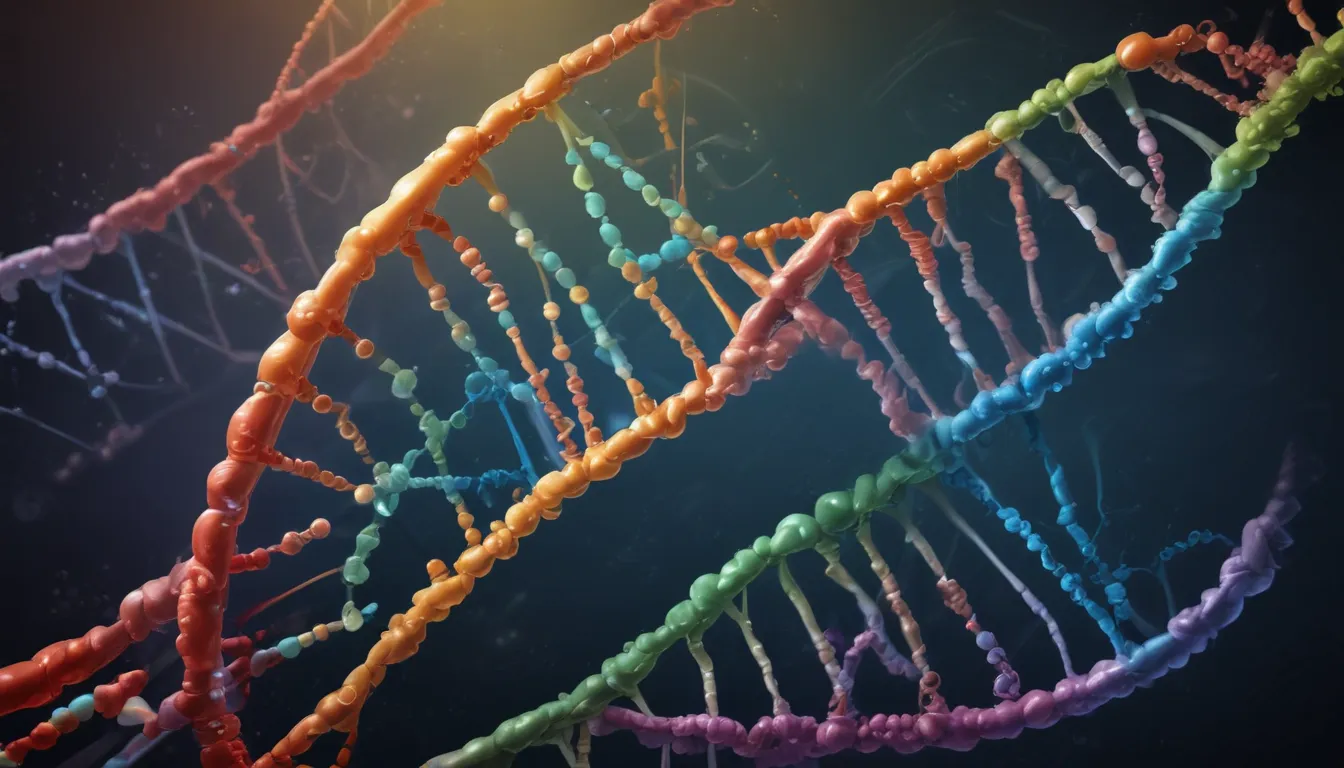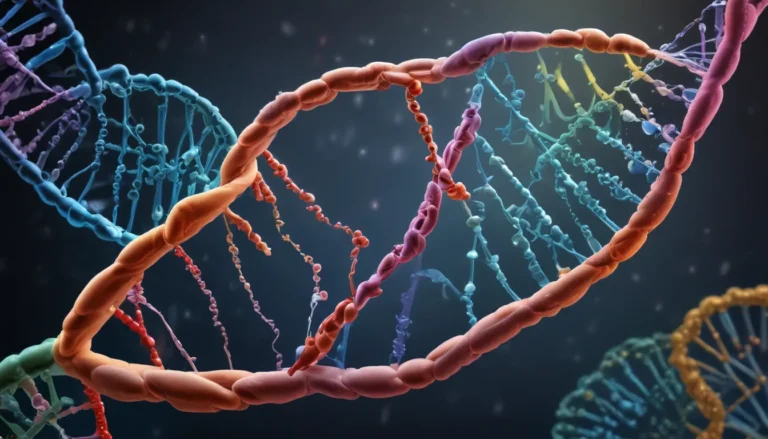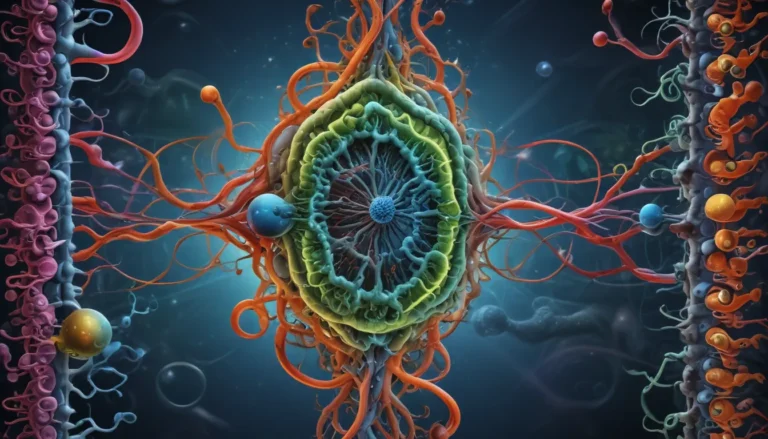A Note About Images: The images used in our articles are for illustration purposes only and may not exactly match the content. They are meant to engage readers, but the text should be relied upon for accurate information.
Embark on an enlightening journey into the realm of DNA replication, a fundamental process that underpins the very essence of life. From its critical role in safeguarding genetic information to its intricate mechanisms, DNA replication never fails to astonish with its complexity and efficiency. Join us as we unravel 16 surprising facts that shed light on this captivating biological phenomenon.
The Marvel of DNA Replication:
DNA replication serves as a genetic photocopying machine, ensuring that each new cell receives an exact replica of the genetic material. This process is crucial for the growth and survival of all living beings, playing a pivotal role in passing on genetic traits and fostering advancements in medical and biotechnological fields.
Unveiling the Intricacies of DNA Replication:
1. A Fundamental Process in All Living Organisms:
DNA replication is the cornerstone of life, enabling cells to duplicate their DNA and pass on genetic information to subsequent generations. It is indispensable for the development, growth, and survival of all organisms.
2. Occurring During the S Phase of the Cell Cycle:
In eukaryotic cells, DNA replication takes place during the Synthesis (S) phase of the cell cycle, preceding cell division. This critical phase ensures the faithful duplication of genetic material.
3. An Incredibly Accurate Process:
The precision of DNA replication is paramount in maintaining genetic integrity and preventing mutations. The replication machinery, comprising DNA polymerases and other proteins, incorporates proofreading mechanisms to rectify errors.
4. A Semiconservative Process:
During DNA replication, each original DNA strand acts as a template for the synthesis of a complementary strand. This results in the formation of DNA molecules consisting of one original and one newly synthesized strand.
5. Involving Leading and Lagging Strands:
DNA replication entails the asymmetric synthesis of leading and lagging strands. While the leading strand is synthesized continuously, the lagging strand is formed in short Okazaki fragments, which are later joined together.
6. Formation of Multiple Replication Forks:
The bidirectional nature of DNA replication gives rise to multiple replication forks, allowing for the simultaneous synthesis of DNA in both directions from the origin of replication.
7. Unwinding of the DNA Double Helix:
The enzyme helicase plays a pivotal role in unwinding the DNA double helix by disrupting hydrogen bonds between base pairs. This separation yields two template strands for replication.
8. RNA Primers in DNA Synthesis:
Primase, an RNA polymerase enzyme, initiates DNA synthesis by generating short RNA primers. DNA polymerases then extend these primers by adding complementary nucleotides, facilitating DNA replication.
9. Orchestration by a Complex Machinery:
The replication machinery comprises a myriad of enzymes and proteins that collaborate to ensure accurate and efficient DNA replication. DNA polymerases, ligases, topoisomerases, and helicases are among the key players in this intricate process.
10. Telomeres’ Vital Role:
Telomeres, found at the ends of linear chromosomes, pose challenges during DNA replication. Specialized enzymes like telomerase assist in maintaining telomere length and integrity, preserving genetic information.
11. Vulnerability to External Factors:
External influences such as chemicals, radiation, and environmental factors can induce DNA damage, impairing the accuracy of replication. This underscores the importance of safeguarding DNA integrity.
12. Implications of Errors on Genetic Disorders:
Untreated errors in DNA replication can lead to mutations with the potential to disrupt normal gene function, culminating in genetic disorders and predisposing individuals to specific diseases.
13. Stringent Regulation of DNA Replication:
Cellular checkpoints and regulatory proteins diligently oversee DNA replication, ensuring its initiation and completion at the appropriate junctures. Any aberrations are promptly addressed to maintain genomic stability.
14. Viral Mechanisms of DNA Replication:
Viruses exhibit unique strategies for DNA replication, coopting host cell machinery to propagate their genetic material. These adaptations enable viruses to hijack cellular processes for their own replication.
15. DNA Replication in Inheritance:
DNA replication serves as the linchpin of inheritance, guaranteeing the faithful transmission of genetic information across generations. It is indispensable for the perpetuation of genetic traits and species survival.
16. Implications in Medicine and Biotechnology:
Insights gleaned from understanding DNA replication have heralded significant advancements in medicine and biotechnology. Techniques like PCR and DNA sequencing owe their existence to unraveling the intricacies of this vital process.
Revelations and Reflections:
Delving into the enigmatic realm of DNA replication unveils a world teeming with complexity and wonder. Each facet, each mechanism, and each regulation underscores the awe-inspiring nature of this fundamental biological process. Embrace the revelations, fuel your curiosity, and embark on a journey of discovery within the captivating domain of DNA replication.
FAQs – Unveiling Further Insights:
-
What is DNA replication?
DNA replication is the intricate process through which a DNA molecule duplicates itself, ensuring the faithful transmission of genetic information during cell division. -
Why is DNA replication important?
DNA replication is vital for the growth, development, and reproduction of living organisms, safeguarding genetic integrity and enabling genetic diversity. -
How does DNA replication occur?
DNA replication involves a series of coordinated steps, including DNA unwinding, base pairing, and proofreading mechanisms, orchestrated by a complex array of enzymes. -
What role do enzymes play in DNA replication?
Enzymes play crucial roles in DNA replication, such as DNA polymerase for nucleotide addition, helicase for unwinding DNA, and ligase for completing DNA strands. -
Can external factors impact DNA replication?
External influences like radiation, chemicals, and genetic mutations can disrupt DNA replication, potentially leading to genetic abnormalities and disease susceptibility.
Embark on a fascinating journey into the world of DNA replication, where each fact unveils a new layer of intricacy and marvel. Delve deeper, question, learn, and marvel at the wonders of this essential biological process that underpins life itself.






